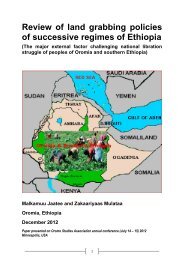freakonomics
freakonomics
freakonomics
Create successful ePaper yourself
Turn your PDF publications into a flip-book with our unique Google optimized e-Paper software.
control, with four abortions for every live birth. Now, virtually overnight, abortion was<br />
forbidden. The only exemptions were mothers who already had four children or women<br />
with significant standing in the Communist Party. At the same time, all contraception and<br />
sex education were banned. Government agents sardonically known as the Menstrual<br />
Police regularly rounded up women in their work-places to administer pregnancy tests. If<br />
a woman repeatedly failed to conceive, she was forced to pay a steep “celibacy tax.”<br />
Ceaus¸escu’s incentives produced the desired effect. Within one year of the abortion ban,<br />
the Romanian birth rate had doubled. These babies were born into a country where,<br />
unless you belonged to the Ceau?escu clan or the Communist elite, life was miserable.<br />
But these children would turn out to have particularly miserable lives. Compared to<br />
Romanian children born just a year earlier, the cohort of children born after the abortion<br />
ban would do worse in every measurable way: they would test lower in school, they<br />
would have less success in the labor market, and they would also prove much more likely<br />
to become criminals.<br />
The abortion ban stayed in effect until Ceau?escu finally lost his grip on Romania. On<br />
December 16, 1989, thousands of people took to the streets of Timisoara to protest his<br />
corrosive regime. Many of the protestors were teenagers and college students. The police<br />
killed dozens of them. One of the opposition leaders, a forty-one-year-old professor, later<br />
said it was his thirteen-year-old daughter who insisted he attend the protest, despite his<br />
fear. “What is most interesting is that we learned not to be afraid from our children,” he<br />
said. “Most were aged thirteen to twenty.” A few days after the massacre in Timisoara,<br />
Ceaus¸escu gave a speech in Bucharest before one hundred thousand people. Again the<br />
young people were out in force. They shouted down Ceau?escu with cries of<br />
“Timisoara!” and “Down with the murderers!” His time had come. He and Elena tried to<br />
escape the country with $1 billion, but they were captured, given a crude trial, and, on<br />
Christmas Day, executed by firing squad.<br />
Of all the Communist leaders deposed in the years bracketing the collapse of the Soviet<br />
Union, only Nicolae Ceau?escu met a violent death. It should not be overlooked that his<br />
demise was precipitated in large measure by the youth of Romania—a great number of<br />
whom, were it not for his abortion ban, would never have been born at all.<br />
The story of abortion in Romania might seem an odd way to begin telling the story of<br />
American crime in the 1990s. But it’s not. In one important way, the Romanian abortion<br />
story is a reverse image of the American crime story. The point of overlap was on that<br />
Christmas Day of 1989, when Nicolae Ceau?escu learned the hard way—with a bullet to<br />
the head—that his abortion ban had much deeper implications than he knew.<br />
On that day, crime was just about at its peak in the United States. In the previous fifteen<br />
years, violent crime had risen 80 percent. It was crime that led the nightly news and the<br />
national conversation.









